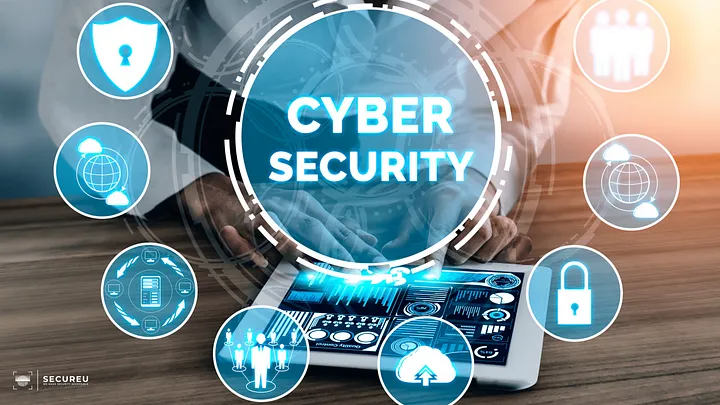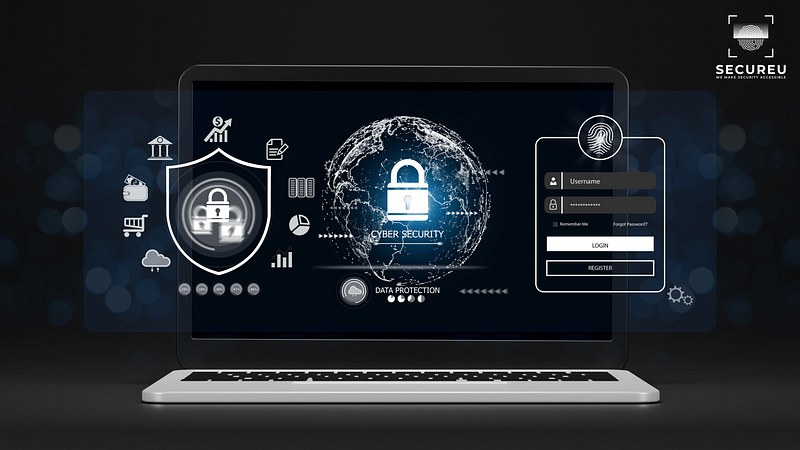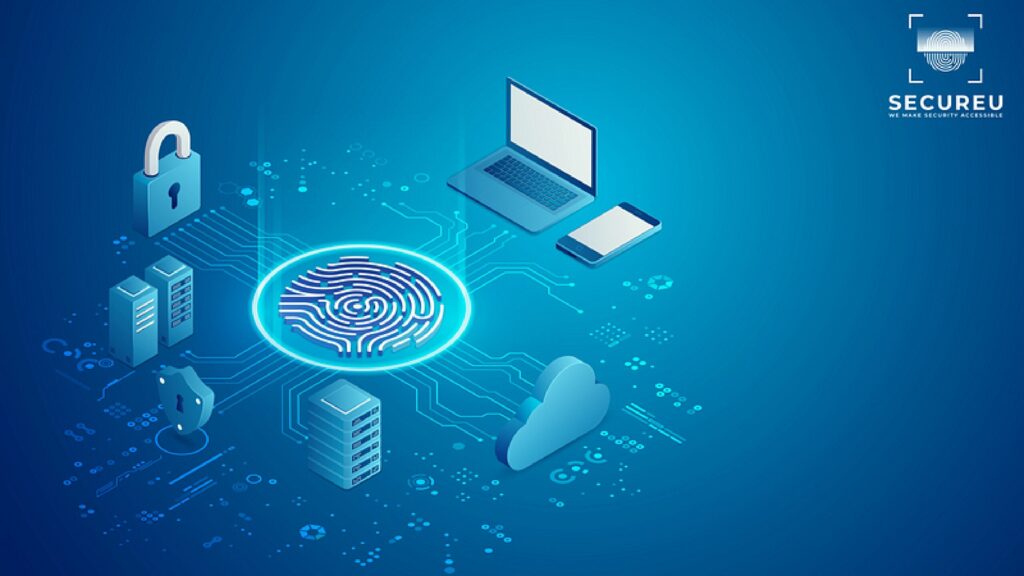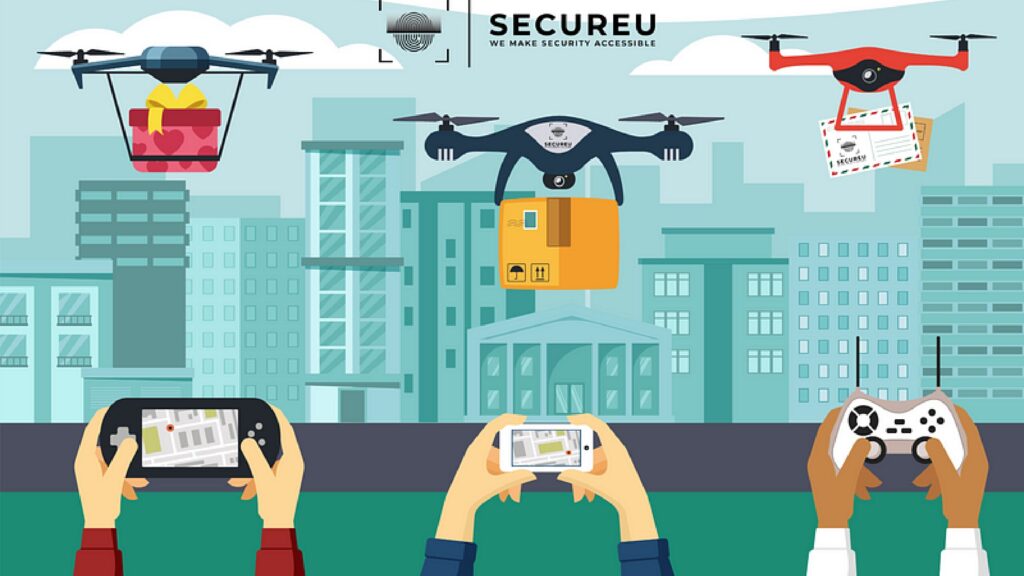How Cybersecurity for Remote Work is Important to Protect Data in the Digital Era
Description: Discover the importance of cybersecurity for remote work and learn effective strategies to ensure data protection in the digital era. Explore best practices such as strong authentication, secure remote access, data encryption, regular updates, and building a culture of remote work cybersecurity. Understand compliance considerations and the consequences of data breaches. Safeguard your remote workforce and protect sensitive data from cyber threats. In the wake of technological advancements and the global shift towards remote work — especially after the pandemic- ensuring data protection has become a cause of concern for businesses worldwide. As more employees work from home or other remote locations, organizations face new challenges in safeguarding sensitive data from cyber threats. This article will explore the importance of cybersecurity for remote work and provide valuable insights into implementing effective data protection strategies. Understanding the Cybersecurity Landscape for Remote Work The rise of remote work and its impact on data security: The advent of remote work has brought about a significant transformation in how organizations operate. However, this shift also introduces new risks and vulnerabilities in terms of data security. Remote work environments often lack the same level of protection as traditional office setups, making them attractive targets for cybercriminals. Common cybersecurity threats faced by remote workers: Remote workers face various cybersecurity threats, including phishing attacks, malware infections, unsecured Wi-Fi networks, and social engineering tactics. Cybercriminals exploit these vulnerabilities to gain unauthorized access to sensitive data or compromise remote devices. The evolving nature of cyber attacks in the digital era: Cyber attacks are continually evolving, with hackers becoming more sophisticated in their techniques. Organizations need to stay up to date with the latest cybersecurity trends and be prepared to defend against emerging threats. The cost of data breaches and the consequences for businesses: Data breaches can have severe financial, reputational, and legal consequences for organizations. The loss of sensitive data can result in significant financial losses, damage to brand reputation, and potential legal liabilities, highlighting the importance of robust data protection measures. Best Practices for Remote Work Data Protection Implementing Strong Authentication Measures: Strong authentication measures, such as multi-factor authentication (MFA), add an extra layer of security to remote work environments. By requiring multiple forms of identification, such as a password and a unique code sent to a mobile device, organizations can significantly reduce the risk of unauthorized access. Securing Remote Access: Virtual Private Networks (VPNs) create encrypted tunnels between remote devices and corporate networks, ensuring secure communication and data transmission. Additionally, organizations should implement secure remote desktop protocols and restrict access to authorised devices and networks. Educating and Training Remote Workers: Raising awareness among remote workers about common cybersecurity threats and attack vectors is crucial. Regular cybersecurity training sessions can help remote workers identify and report suspicious activities, such as phishing attempts or social engineering tactics. Data Encryption: Data encryption plays a vital role in protecting sensitive information. Implementing encryption at rest and in transit ensures that even if data is intercepted, it remains unreadable and unusable to unauthorized individuals. Encrypting email communications and utilizing end-to-end encryption for file sharing further enhances data protection. Regular Software Updates and Patches: Regularly updating operating systems, software, and applications is essential for maintaining a secure remote work environment. Software updates often include security patches that address known vulnerabilities, making it harder for cybercriminals to exploit them. Implementing Robust Endpoint Security: Deploying antivirus and anti-malware software on remote devices adds an extra layer of defense against malicious software. Firewall protection helps monitor and control network traffic, while intrusion detection and prevention systems (IDS/IPS) can identify and mitigate potential threats. Building a Culture of Remote Work Cybersecurity Encouraging a security-first mindset among remote workers: Organizations should foster a culture where remote workers prioritize security and understand the significance of their role in protecting sensitive data. Encouraging the use of secure communication and collaboration tools and emphasising the importance of following cybersecurity best practices can contribute to a security-first mindset. Promoting secure communication and collaboration tools: Utilizing secure communication and collaboration tools, such as encrypted messaging platforms and file-sharing services, ensures that sensitive information remains protected during remote work. These tools offer end-to-end encryption, ensuring that data is secure both in transit and at rest. Conducting periodic security audits and risk assessments: Regular security audits and risk assessments help identify vulnerabilities in remote work setups. By assessing the effectiveness of existing security measures and addressing any weaknesses, organizations can continuously improve their cybersecurity posture. Establishing incident response plans and protocols: Creating comprehensive incident response plans that outline the steps to be taken in the event of a cybersecurity incident is critical. Remote workers should be aware of these protocols and trained on how to report security incidents promptly. Compliance and Regulatory Considerations Understanding data protection regulations and industry standards: Organizations must be aware of data protection regulations and industry standards that apply to their operations. Compliance with regulations such as GDPR, HIPAA, CCPA, and others ensures that remote work setups adhere to the necessary legal and security requirements. Ensuring compliance with GDPR, HIPAA, CCPA, and other relevant laws: Organizations handling personal data or sensitive information must comply with relevant data protection laws. Ensuring remote work setups meet these compliance requirements protects both the organisation and individuals’ privacy. Implementing data handling and privacy policies for remote work: Having clear data handling and privacy policies in place is crucial for remote work environments. These policies outline expectations for remote workers and provide guidance on how to handle and protect sensitive information. In today’s digital landscape, where remote work has become the norm, organizations must prioritize cybersecurity to ensure data protection. By implementing the best practices outlined in this article, businesses can create a secure environment for remote workers and mitigate the risk of data breaches and cyber attacks. Remember, cybersecurity is an ongoing process, and staying vigilant and adapting to emerging threats is crucial for maintaining a robust remote work security posture. By adopting a proactive approach and fostering a culture of cybersecurity, organisations
How Cybersecurity for Remote Work is Important to Protect Data in the Digital Era Read More »
Description: Discover the importance of cybersecurity for remote work and learn effective strategies to ensure data protection in the digital era. Explore best practices such as strong authentication, secure remote access, data encryption, regular updates, and building a culture of remote work cybersecurity. Understand compliance considerations and the consequences of data breaches. Safeguard your remote workforce and protect sensitive data from cyber threats. In the wake of technological advancements and the global shift towards remote work — especially after the pandemic- ensuring data protection has become a cause of concern for businesses worldwide. As more employees work from home or other remote locations, organizations face new challenges in safeguarding sensitive data from cyber threats. This article will explore the importance of cybersecurity for remote work and provide valuable insights into implementing effective data protection strategies. Understanding the Cybersecurity Landscape for Remote Work The rise of remote work and its impact on data security: The advent of remote work has brought about a significant transformation in how organizations operate. However, this shift also introduces new risks and vulnerabilities in terms of data security. Remote work environments often lack the same level of protection as traditional office setups, making them attractive targets for cybercriminals. Common cybersecurity threats faced by remote workers: Remote workers face various cybersecurity threats, including phishing attacks, malware infections, unsecured Wi-Fi networks, and social engineering tactics. Cybercriminals exploit these vulnerabilities to gain unauthorized access to sensitive data or compromise remote devices. The evolving nature of cyber attacks in the digital era: Cyber attacks are continually evolving, with hackers becoming more sophisticated in their techniques. Organizations need to stay up to date with the latest cybersecurity trends and be prepared to defend against emerging threats. The cost of data breaches and the consequences for businesses: Data breaches can have severe financial, reputational, and legal consequences for organizations. The loss of sensitive data can result in significant financial losses, damage to brand reputation, and potential legal liabilities, highlighting the importance of robust data protection measures. Best Practices for Remote Work Data Protection Implementing Strong Authentication Measures: Strong authentication measures, such as multi-factor authentication (MFA), add an extra layer of security to remote work environments. By requiring multiple forms of identification, such as a password and a unique code sent to a mobile device, organizations can significantly reduce the risk of unauthorized access. Securing Remote Access: Virtual Private Networks (VPNs) create encrypted tunnels between remote devices and corporate networks, ensuring secure communication and data transmission. Additionally, organizations should implement secure remote desktop protocols and restrict access to authorised devices and networks. Educating and Training Remote Workers: Raising awareness among remote workers about common cybersecurity threats and attack vectors is crucial. Regular cybersecurity training sessions can help remote workers identify and report suspicious activities, such as phishing attempts or social engineering tactics. Data Encryption: Data encryption plays a vital role in protecting sensitive information. Implementing encryption at rest and in transit ensures that even if data is intercepted, it remains unreadable and unusable to unauthorized individuals. Encrypting email communications and utilizing end-to-end encryption for file sharing further enhances data protection. Regular Software Updates and Patches: Regularly updating operating systems, software, and applications is essential for maintaining a secure remote work environment. Software updates often include security patches that address known vulnerabilities, making it harder for cybercriminals to exploit them. Implementing Robust Endpoint Security: Deploying antivirus and anti-malware software on remote devices adds an extra layer of defense against malicious software. Firewall protection helps monitor and control network traffic, while intrusion detection and prevention systems (IDS/IPS) can identify and mitigate potential threats. Building a Culture of Remote Work Cybersecurity Encouraging a security-first mindset among remote workers: Organizations should foster a culture where remote workers prioritize security and understand the significance of their role in protecting sensitive data. Encouraging the use of secure communication and collaboration tools and emphasising the importance of following cybersecurity best practices can contribute to a security-first mindset. Promoting secure communication and collaboration tools: Utilizing secure communication and collaboration tools, such as encrypted messaging platforms and file-sharing services, ensures that sensitive information remains protected during remote work. These tools offer end-to-end encryption, ensuring that data is secure both in transit and at rest. Conducting periodic security audits and risk assessments: Regular security audits and risk assessments help identify vulnerabilities in remote work setups. By assessing the effectiveness of existing security measures and addressing any weaknesses, organizations can continuously improve their cybersecurity posture. Establishing incident response plans and protocols: Creating comprehensive incident response plans that outline the steps to be taken in the event of a cybersecurity incident is critical. Remote workers should be aware of these protocols and trained on how to report security incidents promptly. Compliance and Regulatory Considerations Understanding data protection regulations and industry standards: Organizations must be aware of data protection regulations and industry standards that apply to their operations. Compliance with regulations such as GDPR, HIPAA, CCPA, and others ensures that remote work setups adhere to the necessary legal and security requirements. Ensuring compliance with GDPR, HIPAA, CCPA, and other relevant laws: Organizations handling personal data or sensitive information must comply with relevant data protection laws. Ensuring remote work setups meet these compliance requirements protects both the organisation and individuals’ privacy. Implementing data handling and privacy policies for remote work: Having clear data handling and privacy policies in place is crucial for remote work environments. These policies outline expectations for remote workers and provide guidance on how to handle and protect sensitive information. In today’s digital landscape, where remote work has become the norm, organizations must prioritize cybersecurity to ensure data protection. By implementing the best practices outlined in this article, businesses can create a secure environment for remote workers and mitigate the risk of data breaches and cyber attacks. Remember, cybersecurity is an ongoing process, and staying vigilant and adapting to emerging threats is crucial for maintaining a robust remote work security posture. By adopting a proactive approach and fostering a culture of cybersecurity, organisations










